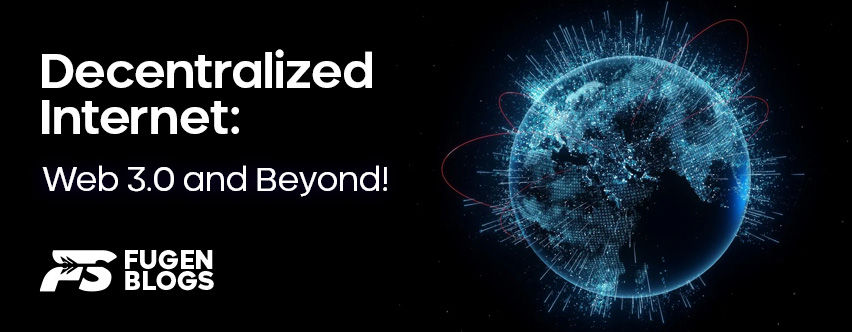The internet has come a long way since its inception, evolving from static web pages to interactive and dynamic content. As technology advances, we are entering a new era known as Web 3.0, where the decentralized internet takes center stage. In this blog, we will explore the concept of the decentralized internet, its potential impact, and how it is shaping the future of online interactions.
Table of Contents
What is the Decentralized Internet?
The decentralized internet, often referred to as Web 3.0, is a paradigm shift from the traditional centralized model of the internet. In the current web landscape, most services and applications are hosted on central servers owned by big tech companies. Web 3.0 aims to change this by distributing data and applications across a network of nodes, removing the need for intermediaries, and giving users more control over their data.
Key Aspects of Web 3.0:
- Blockchain Technology: Blockchain, the underlying technology of cryptocurrencies like Bitcoin, plays a vital role in the decentralized internet. It enables the creation of decentralized applications (dApps) and smart contracts, fostering a transparent and secure environment for online interactions.
- Data Ownership and Privacy: In Web 3.0, users have greater ownership and control over their data. They can choose to share their information with specific applications without surrendering control to central authorities.
- Open-source Collaboration: Web 3.0 emphasizes open-source collaboration, encouraging developers worldwide to contribute to the growth of decentralized applications and protocols.
Comparison Table: Centralized vs. Decentralized Internet
| Aspect | Centralized Internet | Decentralized Internet |
|---|---|---|
| Data Control | Centralized control of user data | Users have ownership of their data |
| Intermediaries | Relies on intermediaries | Removes intermediaries for direct interactions |
| Trust and Transparency | Trust required in central authorities | Built on transparent blockchain technology |
| Innovation | Controlled by tech giants | Encourages open-source collaboration |
Stats on the Growth of Decentralized Internet:
- According to a report by Deloitte, 63% of surveyed companies said they were using blockchain technology in their operations as of 2020.
- The number of active decentralized applications (dApps) reached over 3,000 in 2021, with DeFi (Decentralized Finance) leading the way in adoption.
FAQs:
- Q: What are the benefits of a decentralized internet for users?
- A: Users can enjoy enhanced data privacy, control, and security, as well as reduced reliance on centralized authorities.
- Q: How does Web 3.0 impact online transactions?
- A: Web 3.0’s blockchain technology enables secure and transparent peer-to-peer transactions without the need for traditional financial intermediaries.
- Q: Is Web 3.0 fully developed and widely adopted?
- A: Web 3.0 is still in its early stages of development, but it is rapidly gaining traction, especially in areas like DeFi, gaming, and content creation.
Conclusion:
The decentralized internet, or Web 3.0, represents a significant shift in how we interact and transact online. By leveraging blockchain technology and empowering users with greater data ownership, the decentralized internet offers a promising future for a more open, secure, and user-centric web. As the development of Web 3.0 continues to progress, we can expect to witness innovative applications and use cases that transform the way we experience the internet. Embrace the era of Web 3.0 and embark on a journey into the decentralized world of boundless possibilities.


Leave a Reply